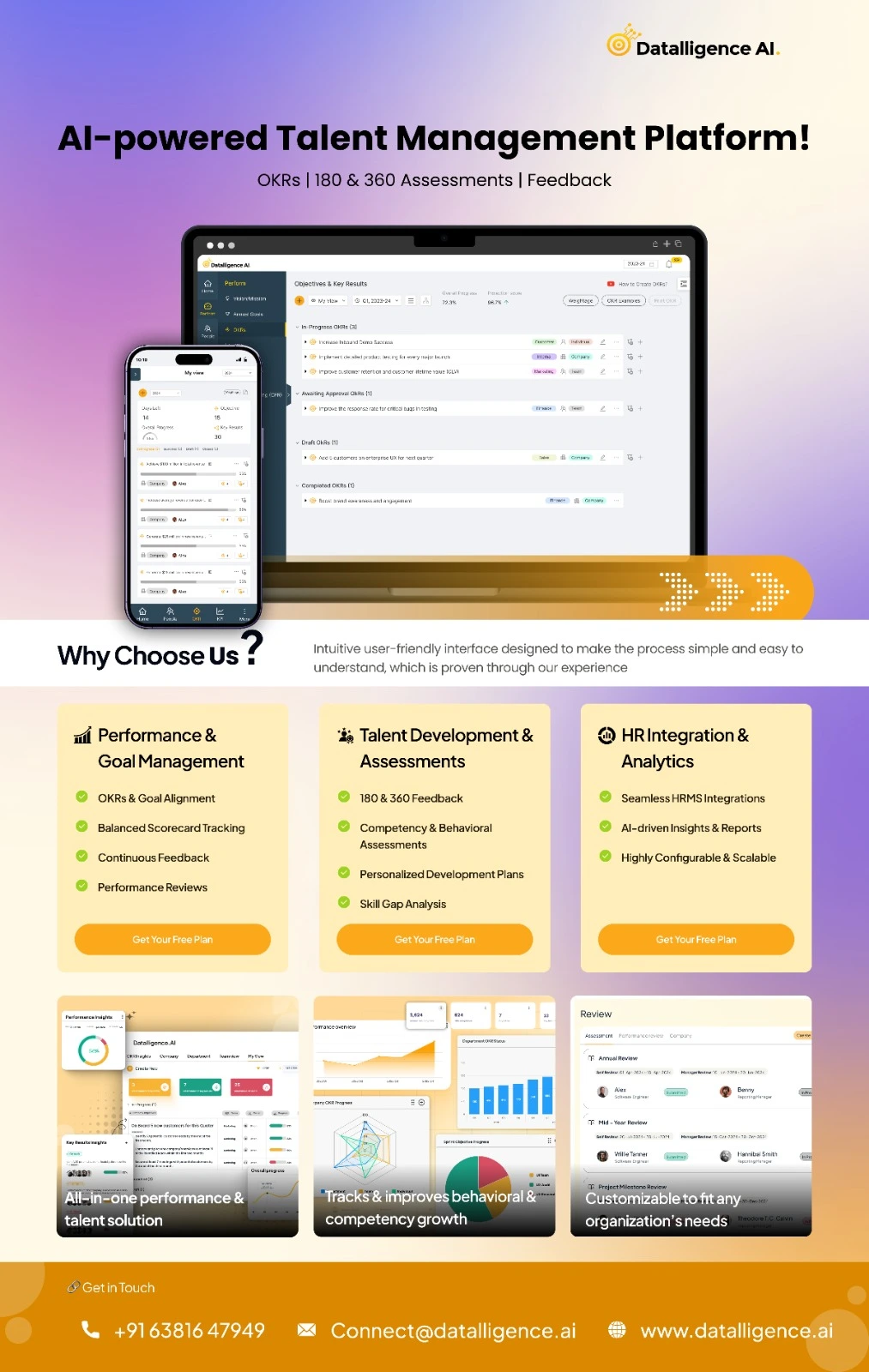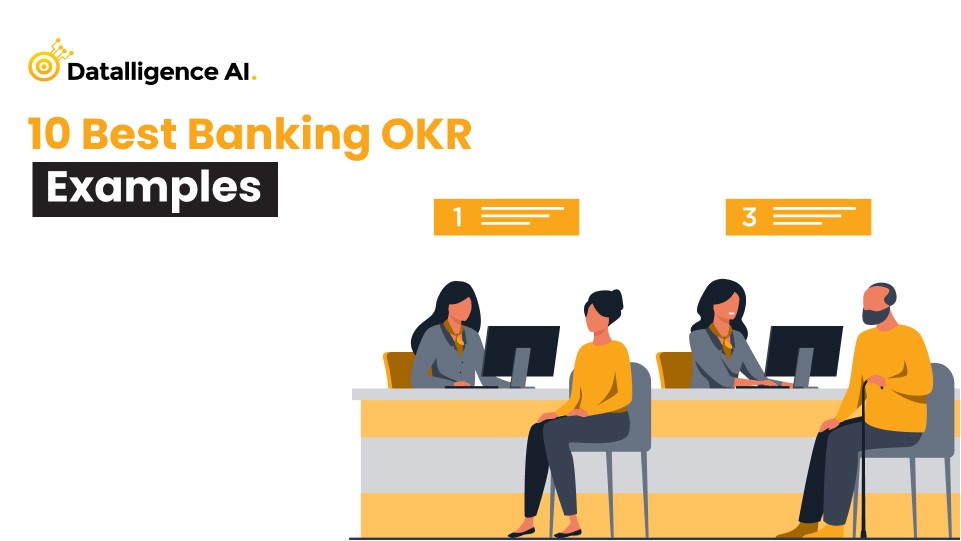Organizations continuously seek effective best performance management tools to optimize employee contributions and achieve strategic goals. A common question arises: are Objectives and Key Results (OKRs) a replacement for traditional performance reviews? To answer this, let’s examine both OKRs and performance management separately, and then explore how they can synergistically enhance your performance management arsenal.
Understanding the best Performance Mangement Tools
OKRs as a Performance Management
- OKRs are a goal-setting and tracking methodology, functioning as powerful performance management They provide a framework for setting measurable objectives (“Whats”) and defining the steps to achieve them (“Hows”).
- OKRs promote ambitious goal-setting, driving teams to stretch and achieve significant results.
- They facilitate continuous performance management by decoupling performance evaluation from compensation discussions
- The bottom-up goal-setting capability of OKRs empowers employees, reduces manager subjectivity, and enhances engagement—key elements of effective performance management
- OKRs as a performance management allows for more frequent conversations about performance, rather than a single year end review.
- OKRs are a goal-setting and tracking methodology, functioning as powerful performance management They provide a framework for setting measurable objectives (“Whats”) and defining the steps to achieve them (“Hows”).
Traditional Performance Management:
- Traditional performance reviews, often tied to compensation, evaluate individual performance over a specific period.
- While providing feedback and identifying improvement areas, they can create anxiety and dissatisfaction among employees, especially when linked directly to pay
- Traditional performance reviews are one of many performance management
- Traditional performance reviews, often tied to compensation, evaluate individual performance over a specific period.
Goal Setting with OKRs
Goal setting, as a cornerstone of best performance management tools, transcends mere business strategy; it’s a fundamental human trait that has shaped civilizations. From ancient hunters strategizing for sustenance to modern entrepreneurs envisioning market dominance, the ability to define and pursue objectives is intrinsic to human progress. In the realm of organizational performance, this translates to structured frameworks that guide individuals and teams toward desired outcomes.
Management by Objectives” (MBO)
Peter Drucker’s “Management by Objectives” (MBO), a pioneering concept, recognized the power of aligning individual efforts with organizational goals. MBO emphasized the importance of collaboratively setting objectives, monitoring progress, and evaluating results based on achievement rather than mere activity. This foundational approach laid the groundwork for contemporary methodologies like OKRs, which refine and enhance the principles of MBO.
Modern performance management
OKRs, as a best performance management tool, take goal setting a step further by introducing the concept of ambitious, measurable objectives, coupled with key results that track progress. This framework ensures that goals are not just aspirations but actionable plans with quantifiable milestones. The significance of goal setting within performance management tools lies in its ability to provide clarity, focus, and motivation.
Well-defined goals, when communicated effectively, empower employees to understand their roles in the larger organizational picture, fostering a sense of purpose and accountability. Furthermore, goal setting facilitates performance evaluation by providing a clear benchmark against which individual and team contributions can be measured.
When integrated seamlessly into performance management tools, goal setting transforms from a static exercise into a dynamic process that drives continuous improvement and organizational success.
Why You Should Integrate Qualitative Reviews in Performance Management tools
Traditional performance reviews, often driven by rigid metrics and numeric ratings, fall short in capturing the full spectrum of employee contributions. That’s why organizations are shifting toward qualitative, rating-less evaluations that focus on descriptive feedback and behavioral insights.
What Makes Qualitative Reviews Powerful?
Holistic Assessment
They go beyond output and consider how work is done—factoring in behavior, mindset, and interpersonal impact.No Rating Bias
By eliminating numeric scores, qualitative reviews remove the pressure of arbitrary ratings and reduce bias.Focus on Core Competencies
These reviews highlight essential attributes that can’t be quantified but are crucial for long-term success:Empathy – Understanding team and customer needs to build trust.
Collaboration – Working effectively across teams.
Communication – Clear and constructive dialogue.
Accountability – Taking ownership and delivering reliably.
Organizational Advocacy – Championing the company’s mission and values.
Personalized Development
Narrative feedback offers rich insights that help in crafting individual development plans and targeted coaching.Improved Retention
A study by Bersin by Deloitte found that companies using qualitative reviews saw 31% lower employee turnover, thanks to a more human-centric approach.Recognition with Context
Unlike numbers, stories of impact and peer feedback create a deeper sense of appreciation and motivation.
Integrating OKRs into Performance Management
To maximize the effectiveness of performance management tools, organizations must align individual and organizational performance evaluations. OKRs facilitate this alignment by:
- Providing a collaborative framework for tracking progress and fostering ongoing performance conversations.
- Linking individual outputs to organizational outcomes.
- Enabling retrospective discussions focused on challenges, lessons learned, and best practices
- Supporting data-driven performance analysis and feedback.
By integrating OKRs into your performance management , you can:
- Promote prioritization and focus.
- Foster transparency and accountability.
- Drive higher performance and engagement.
Tips for Successful Implementation of Performance Management
- Implement regular check-ins and manager reviews.
- Provide continuous support and feedback.
- Conduct frequent 1:1 meetings.
Conclusion
While OKRs are not a replacement for traditional performance reviews, they serve as a valuable addition to your best performance management tools. By implementing continuous performance management, decoupling compensation from performance, and incorporating qualitative reviews, organizations can create a more effective and engaging performance management system. OKRs are an excellent tool to utilize in a continuous performance management system.
To explore how Datalligence OKR can enhance your best performance management tools, contact us for a trial and quote.












